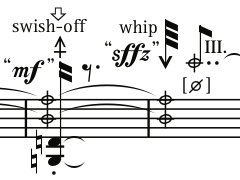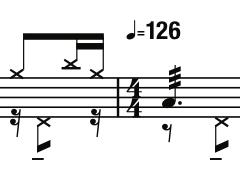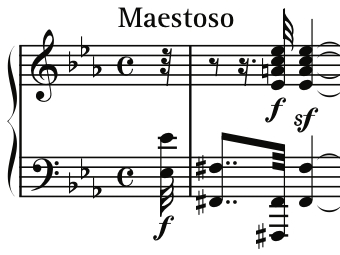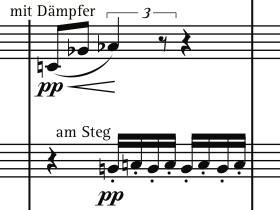neueweise — fonts for new music notation
[09 Jul 2017] Release of a Sibelius House Style, making use of the neueweise font family a breeze in Sibelius. The latest version of the fonts is 1.002 (Jan 2016). The neueweise fonts are updated and improved versions of shirling & neueweise house fonts, in use since 2002.
Designed to respond to the diverse needs of New Music notation, the neueweise font family enhances the look of any score. The Notes, Articulations and Pitches fonts can also add a modern touch of elegance to your Classical music score. [Click images for full-page examples]
All neueweise fonts can be used in any notation software programme that allows the user to choose and define their preferences for font use.
SET of 3 Fonts — “The Basics”
neueweise Notes contains noteheads common to New Music, as well as rests, and straight and angled flags.
neueweise Articulations features a range of articulations, bow markings, fermati, tremolos with 1–5 bars, fingernail, guitar pick, slap tongue, Bartók pizz., thumb position symbols and more.
neueweise Pitches offers traditional accidentals and quarter tone flats and sharps, as well as their inflected versions (arrows up/down) and smaller versions with brackets; also round and square brackets for use with notes and accidentals.
Each individual font is available for €20, or the three fonts can be purchased as a set for €50.
Character Charts
Click on the image below to load a PDF showing the characters available in each font in the set.
Design Characteristics
Although neueweise fonts were designed specifically for New Music, they work perfectly for traditional notation as well, adding a delicate touch of modern elegance to Classical scores. Some notable features of the font set:
- Distinguished graphic design consistency (thin/thick lines, notehead sizes);
- Standard accidentals, quarter tones and inflected (arrow up/down) versions of all;
- Extremely legible inflected accidentals, even at reduced size (cue notes, dense scores);
- Narrower design of many characters maximizes available horizontal “real estate”;
- Unified notehead width ensures consistent appearance and stem alignment of standard and alternate noteheads;
- Bold and stylish design makes your work stand out — musicians will love your score even more!
history
Around 2000, making symbols commonly needed for New Music notation available in one score usually required using several different fonts from different designers and sources. Each font had characters not found in other font sets, and this mix-and-matching resulted in many graphic design inconsistencies.
The first set of shirling & neueweise house fonts was developed in 2002, in part to overcome this problem, but also to design a font set that was elegant and stylish, and would be pleasing for musicians to look at during hours of practice and rehearsals. Wherever possible, the character width was reduced; horizontal space is a valuable thing in New Music Notation! Over the following decade, many design enhancements were made, new characters were added and the functionality of the fonts was greatly improved.
In January 2015, significant design and functionality improvements were made to the font set and the first three fonts in the neueweise family are now available publicly for the first time: Articulations, Notes and Pitches. Much attention has been put on ensuring graphic design consistency across the entire font set, but more importantly, in making them æsthetically pleasing.
Earlier versions of the fonts were used notably in mathias spahlinger’s éphémère and Lachenmann’s Pression, scores prepared by SN for PEERMusic and Breitkopf & Härtel, respectively.
Finale Users
Font Annotation files (FANs) are included for each font. A stem connection library is included with Notes; an articulation library is included with Articulations.
Changes that need to be made to your template or document to use the fonts are described in careful detail in the neueweise “user manual”.
!!Mac users!! — don’t forget to add these fonts to your “MacSymbolFonts.txt” file (in the Configuration Files folder):
neueweise Articulations
neueweise Notes
neueweise Pitches
Sibelius Users
The neueweise House Style released in July 2017 includes the necessary mapping to use neueweise fonts. Import the library with only a few clicks.




